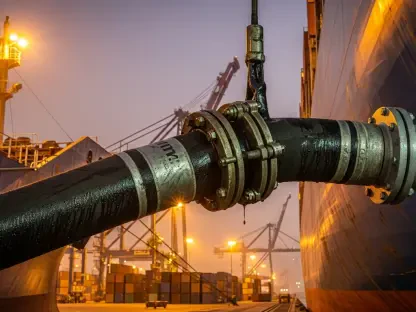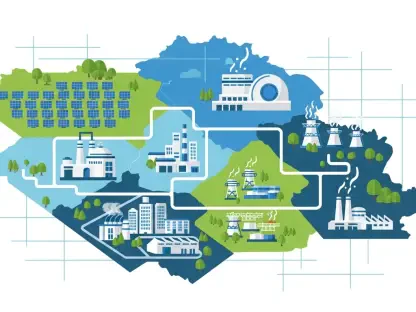Setting the Stage for Sustainable Aviation Dynamics
In an era where the aviation industry contributes nearly 3% of global carbon emissions, the race to achieve net-zero by 2050 has become a defining challenge for airlines across Asia. Amid this pressing environmental imperative, Vietjet, a Vietnam-based carrier, emerges as a pivotal player, reshaping the market with its pioneering use of Sustainable Aviation Fuel (SAF) and a standout workplace culture. This analysis delves into the airline’s strategic positioning within the Asian aviation sector, examining how its dual focus on green innovation and employee satisfaction influences market trends. By exploring current patterns, data-driven insights, and future projections, this examination aims to uncover Vietjet’s impact on sustainable aviation and its potential to drive systemic change in a region hungry for eco-friendly travel solutions.
Analyzing Vietjet’s Market Position and Sustainability Trends
Pioneering Green Fuel Adoption in Vietnam’s Aviation Sector
Vietjet has carved a distinct niche in Asia’s aviation market by becoming the first airline in Vietnam to integrate domestically blended SAF into its operations. Securing 1,200 cubic meters of SAF through a strategic alliance with Petrolimex Aviation, the airline has aligned with rigorous international ISCC EU standards. This fuel, derived from renewable resources such as used cooking oil and agricultural by-products, offers a potential reduction of up to 80% in lifecycle carbon emissions compared to traditional jet fuel. Since initiating SAF-powered flights, Vietjet has signaled a shift in market dynamics, encouraging competitors to explore similar pathways. However, the high production costs and limited supply of SAF pose significant barriers to widespread adoption, shaping a market where early movers like Vietjet could gain substantial competitive advantages.
Strengthening Domestic Supply Chains for Long-Term Growth
A critical aspect of Vietjet’s market strategy lies in its contribution to building a robust domestic SAF supply chain within Vietnam. By supporting local blending operations at facilities like the Nha Be Oil Depot, the airline aligns with national green growth initiatives, positioning Vietnam as an emerging hub for sustainable aviation inputs in Asia. Compared to more advanced markets like Singapore, Vietnam’s infrastructure is still developing, presenting both opportunities for growth and risks of supply bottlenecks. Industry analysis suggests that fostering local production could reduce dependency on imports and lower costs over time, a trend that could redefine regional fuel markets. Vietjet’s proactive involvement in this space not only strengthens its operational resilience but also sets a precedent for collaborative market development.
Balancing Workforce Excellence with Environmental Goals
Beyond fuel innovation, Vietjet’s market influence extends to its human capital strategies, an often-overlooked driver of operational success in aviation. Employing over 9,000 staff from more than 60 nationalities, the airline has consistently been recognized as one of Asia’s top workplaces, reflecting a commitment to employee welfare through modern facilities and comprehensive training programs like the Vietjet Aviation Academy. This focus on workforce well-being enhances productivity and innovation, critical for navigating complex sustainability initiatives. Market data indicates that airlines prioritizing employee satisfaction often see lower turnover and higher efficiency, providing Vietjet with a unique edge in a labor-intensive industry. This balanced approach positions the airline as a model for integrating human and environmental sustainability in competitive markets.
Expansion Strategies and Regional Market Penetration
Vietjet’s operational growth, particularly in high-demand markets like India with 10 direct routes connecting to Vietnam, underscores its strategic market expansion. This move taps into Asia-Pacific’s burgeoning travel demand, fueled by economic growth and rising middle-class populations. By integrating sustainable practices into its expanding network, Vietjet not only captures market share but also influences consumer preferences toward greener travel options. Projections suggest that airlines embedding sustainability into their growth strategies will likely dominate passenger loyalty in the coming years, especially as environmental awareness rises. Vietjet’s ability to scale sustainably while expanding its footprint offers a compelling case study for market adaptability and foresight.
Forecasting Future Market Trends in Sustainable Aviation
Technological and Regulatory Shifts on the Horizon
Looking toward the future, the Asian aviation market is poised for transformation driven by broader SAF adoption and evolving regulatory frameworks. Technological advancements in biofuel production are expected to lower costs, making SAF more accessible to mid-tier airlines by the end of this decade. Simultaneously, government policies across the region are increasingly mandating emissions reductions, with incentives for green fuel usage likely to shape investment patterns. Vietjet’s early adoption places it ahead of the curve, potentially securing favorable partnerships and regulatory support. Market forecasts indicate that by 2027, SAF could account for a significant share of fuel consumption in leading Asian hubs, with Vietnam emerging as a key player if current trends persist.
Emerging Innovations and Consumer Demand Patterns
Beyond SAF, innovations such as electric and hydrogen-powered aircraft are gaining traction, though their commercial viability remains years away. These developments could disrupt traditional market structures, creating new segments for early adopters to explore. Consumer demand for eco-friendly travel is another rising trend, with surveys showing a growing willingness to pay premiums for sustainable flights. Vietjet’s current strategies align well with this shift, positioning the airline to capture a loyal customer base. Market analysis predicts that airlines failing to adapt to these preferences risk losing relevance, while leaders like Vietjet could redefine competitive benchmarks through consistent innovation.
Economic Factors and Global Competitiveness
Economic variables, including fluctuating fuel prices and geopolitical tensions, will also influence the sustainable aviation market. High SAF costs remain a barrier, but economies of scale and increased production could mitigate this challenge over time. Additionally, Asia’s role as a global travel hub amplifies the need for competitive sustainability practices to attract international partnerships. Vietjet’s focus on local supply chains and operational efficiency offers a buffer against economic volatility, enhancing its global standing. Projections suggest that airlines integrating cost-effective green solutions will likely lead market consolidation, with Vietjet well-placed to capitalize on these dynamics.
Reflecting on Strategic Insights for Aviation Markets
Looking back, Vietjet’s journey through 2025 highlighted a transformative approach to balancing environmental responsibility with market growth in Asia’s aviation sector. The airline’s pioneering SAF initiatives, coupled with a strong emphasis on workforce excellence and regional expansion, underscored its role as a market leader. For stakeholders, the key takeaway was the importance of early investment in sustainable technologies and strategic partnerships to secure long-term competitiveness. Airlines were encouraged to advocate for supportive policies and prioritize local supply chain development to reduce costs. Meanwhile, fostering employee satisfaction emerged as a vital component of operational success. Moving forward, the industry should focus on scaling innovations like SAF while preparing for next-generation technologies, ensuring that sustainability becomes a core driver of market evolution.









